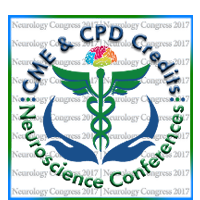
Evelyn M Garcia
Virginia Tech Carilion School of Medicine, USA
Title: System based practice requires a holistic approach: From the heart to the brain
Biography
Biography: Evelyn M Garcia
Abstract
Across the globe people are enjoying greater longevity. With greater lifespan comes increasing rates of structural heart disease and its dire complication, cardioembolic stroke. Aortic stenosis is the most prevalent cardiac valvular disease in the Western world. Because of advanced age and comorbidities, 30% of aortic stenosis patients are not surgical candidates. Transcatheter Aortic Valve Implantation/Replacement (TAVI/TAVR) is rapidly becoming the standard treatment in this patient population and being expanded to encompase populations of younger patients as an alternative to surgical aortic valve replacement (SAVR). Stroke is one of the most feared complications of TAVI/TAVR with an incidence ranging from 3.4-8% of patients.
Stroke is the 4th leading cause of death in the Unites States and 2nd leading cause of death in the EU and Europe. Twenty percent of stroke patients have cardiogenic sources of emboli with 50% of those related to non-valvular atrial fibrillation and greater than 90% of thrombi originating in the left atrial appendage (LAA). In one study, greater than 55% of patients with first time stroke and known non-valvular atrial fibrillation were on anticoagulation therapy, 68% were found to be subclinical. Percutaneous procedures have been developed to address the risk of cardioembolic stroke for those patients in whom standard medical therapy is contraindicated. LAA occlusion is available to this patient cohort with multiple device options and variable routes of deployment. Embolic events have been documented during LAA occlusion procedures with variable sources of embolic material identified through pathologic analysis of debris. As we treat the heart we must be cognizant of the impact on the brain. Total ischemic lesion volume of 1.5-4.3 cm3 equates to the death of approximately 2 million neurons and the decoupling of 1 billion synapses. The future of minimally invasive structural heart interventions must be married with the combination of endovascular protection and neuroendovascular intervention to treat the whole patient.

